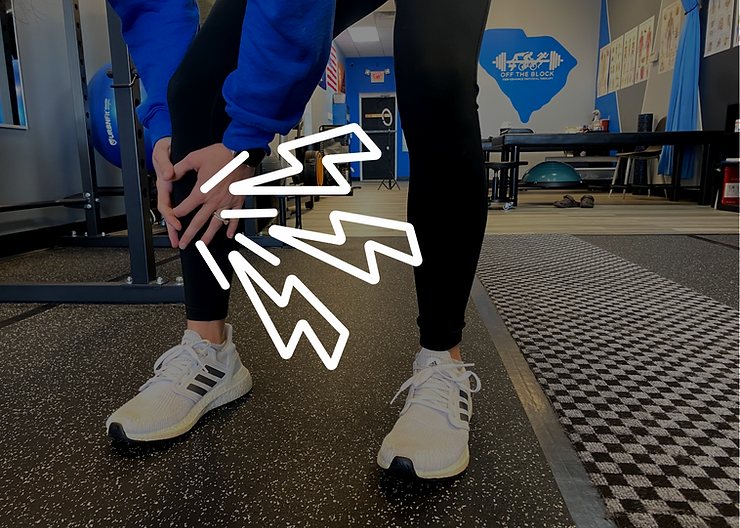Shin splints are a common injury that affects runners and other athletes. The condition is characterized by pain in the lower leg, particularly around the shin bone. There’s no end-all consensus among sports scientists, and theories have included small tears in the muscle that’s pulled off the bone, an inflammation of the periosteum—a thin sheath of tissue that wraps around the tibia, or shin bone—an inflammation of the muscle, or some combination of all of these.

Shin splints can be caused by a number of factors, including overuse, improper footwear, and improper form. While shin splints can be frustrating, they are typically not serious and can be treated with some simple steps. In this blog post, we will discuss some recommendations for managing and preventing shin splints.
⁃ Temporary Compression
Compression can help to reduce swelling and improve blood flow to the affected area. Using temporary wraps, like Floss (see below) can be an effective way to manage shin splints. Compression can also help to prevent shin splints from developing by providing support to the muscles and reducing the impact of running or other activities. See the link below to our fave Amazon floss link!
PRx Performance Athletic Strong Compression Band for Muscle Recovery & Increased Mobility with Stretching Movements Fit in The Gym Bag Circulation & Reduce Soreness Tack and Floss Strap (1mm) https://a.co/d/4zGtSWz
⁃ Proper Footwear
Wearing proper footwear is essential for preventing shin splints. Shoes should be supportive and comfortable, and should fit properly. Shoes that are worn out or do not provide adequate support can lead to a variety of injuries, including shin splints. Be sure to replace shoes regularly, as worn-out shoes can contribute to the development of shin splints.
⁃ Stretching and Strengthening
Stretching and strengthening exercises can help to prevent shin splints from developing. Strengthening the muscles in the legs and feet can help to improve stability and reduce the risk of injury. Stretching can help to improve flexibility and reduce muscle tension. Be sure to warm up properly before engaging in any physical activity and cool down properly after. See some of our most common recommendations in the video below.
⁃ Gradual Progression
Gradual progression is key to preventing shin splints. Overtraining or increasing mileage too quickly can lead to injury. It's important to listen to your body and increase activity levels slowly and gradually. Gradual progression allows the muscles and bones to adapt to the stress of running or other activities.
In conclusion, shin splints can be a frustrating injury, but they can be managed and prevented with some simple steps. Compression and movement can help to alleviate pain and reduce inflammation. Wearing proper footwear, stretching and strengthening, and gradual progression can help to prevent shin splints from developing. If you experience persistent or severe pain, it's important to seek medical attention to rule out more serious conditions.
.png?width=1280&height=720&name=Untitled%20design%20(22).png)




